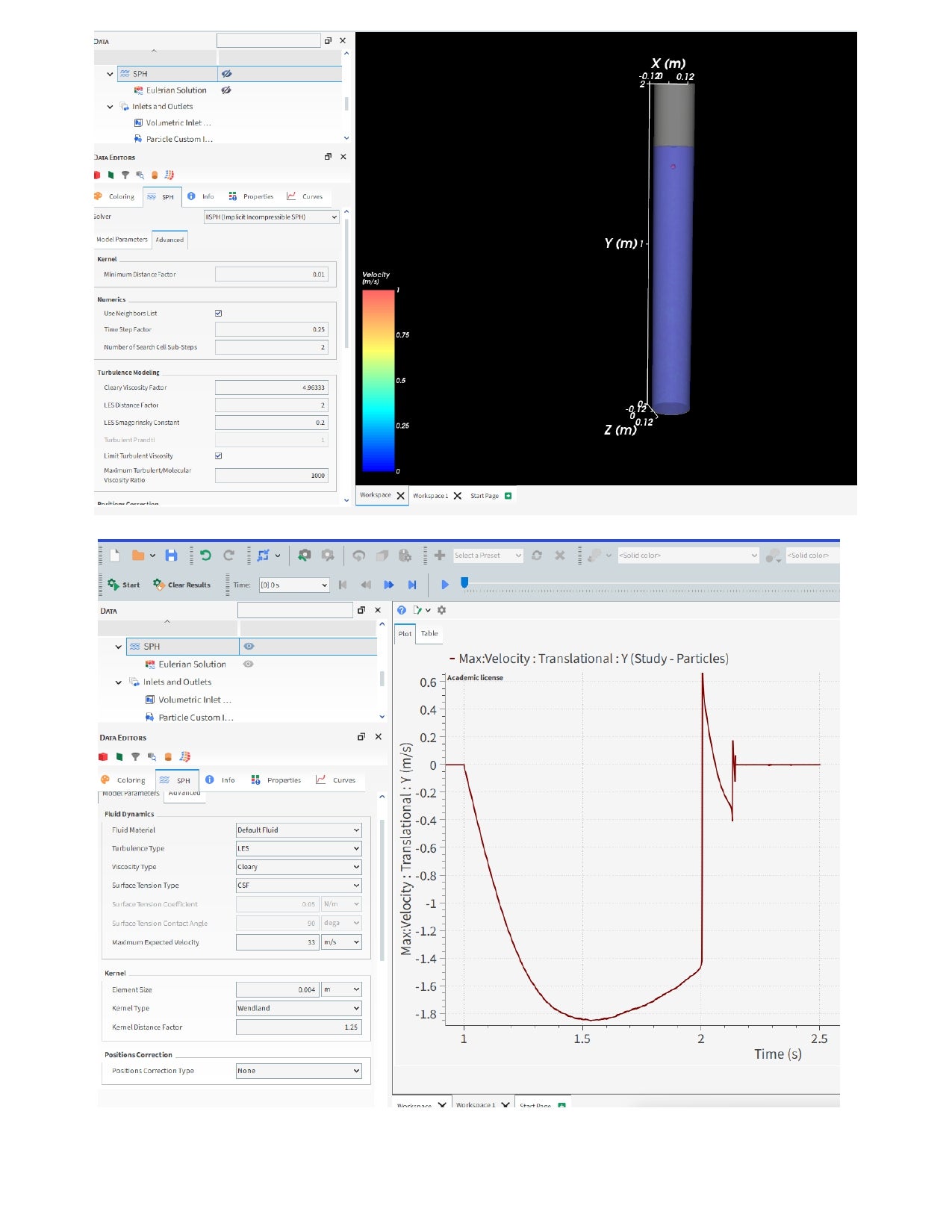Particle velocity decrease after reaching terminal velocity (SPH-DEM)
-
-
June 18, 2025 at 4:33 pm
abu.hamad
SubscriberHello, I am using SPH-DEM coupling in ANSYS Rocky. I am simulating a particle (DEM) falling in a cylinder full of water (SPH). It is famous case where we have analytical solution and it is used almost in every article for validation of SPH-DEM code. According to the analytical solution, particle's velocity in the falling direction should stay constant after reaching the terminal velocity. When I use one-way CFD-DEM coupling in ANSYS rocky, it works well ant it's correct but when i use SPH-DEM method, particle's velocity starts to decrease after reaching the terminal velocity. It decreases and decreases until it touches the bottom. I change size of cylinder to avoid sie wall effects and its ok, decreased SPH element size (SPH element size 3 mm and DEM particle size 40 mm) and time step as much as possible (0.0001 second), changed flow from laminar to turbulent, changed viscosity type, surface tension model none and CSS and CSF but but its not working. You can also see SPH setting in the attached figure and velocity of particle in y-direction. The particle starts to fall at 1 second, and it reaches terminal velocity at almost 1.5 seconds. Then, the velocity should stay constant, and it should be a straight line, but you can see it is decreasing until it touches the bottom. I will be thankful if you can solve the problem. Thanks
-
June 30, 2025 at 7:17 pm
Jackson Gomes
Ansys EmployeeHi Adu.
The issue is related to SPH resolution, even if you tune viscosity, turbulence, and surface tension, if the SPH mesh isn't fine enough, the fluid forces become inaccurate and can cause artificial deceleration.
To match the analytical terminal velocity, you'd need a very refined SPH setup and a fully developed, steady flow. In practice, that level of refinement is often not feasible, so small deviations like this are expected.
-
- You must be logged in to reply to this topic.



-
3492
-
1057
-
1051
-
965
-
942

© 2025 Copyright ANSYS, Inc. All rights reserved.








